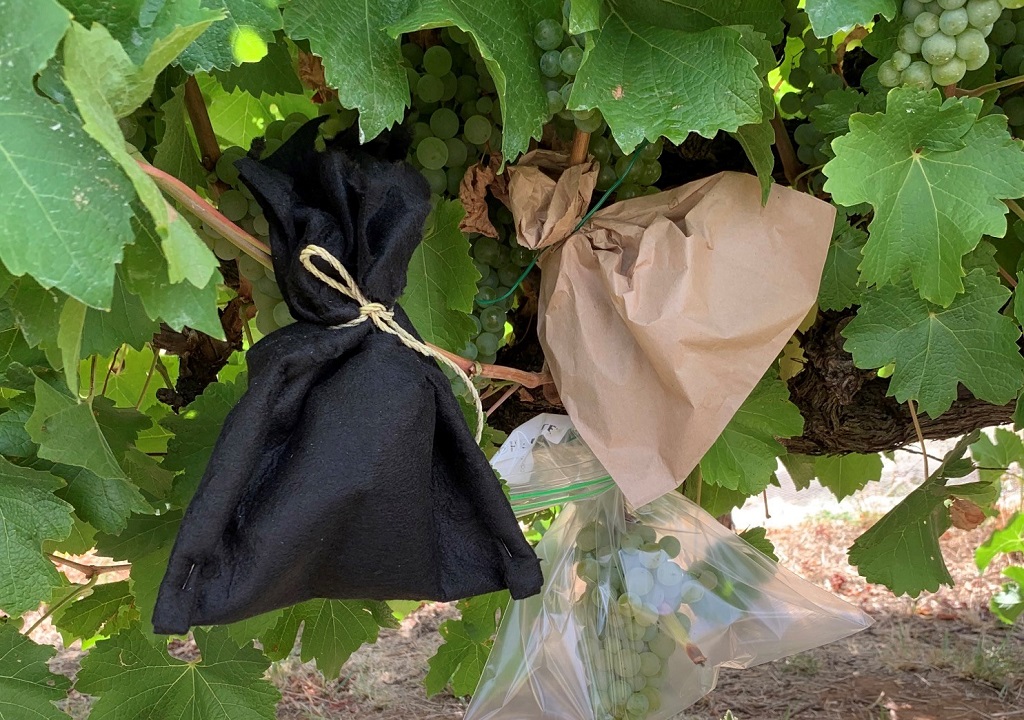Image courtesy of Professor Kerry Wilkinson.
Professor Kerry Wilkinson from the University of Adelaide unveiled results from a new smoke taint protection technology, developed in partnership with Peter Michael Winery, at the National Wine Sector Bushfire Conference this week.
In early trials, activated carbon (AC) hoods showed promising results, protecting the grapes from 97 per cent of smoke taint.
Following the 2020 California fire season, Sir Peter Michael was compelled to initiate research on a possible solution that might protect maturing grape clusters from smoke taint.
Enlisting the scientific minds of Peter Michael’s winemaker, Robert Fiore, who is also a geophysicist and oenologist, and Professor Kerry Wilkinson in Adelaide, South Australia, the team simulated real-world smoke conditions for the trials both in the field on the vine and in a controlled smoke box.
“After five years of California wildfires, we have accepted that they are now endemic and a global challenge,” said Sir Peter Michael.
“I had the germ of an idea and with the scientific knowledge of Robert and Kerry, we were able to realize it with astounding results.”
During trials, the grape clusters were covered with a specially woven activated carbon hood that allowed air ventilation but successfully trapped virtually all smoke particulates.
Professor Wilkinson showed examples and results for some of the completed experiments that proved the effectiveness of this new technology.
“We were pleased with the early results and extended those trials that demonstrated the carbon hood to be even more promising,” Prof. Wilkinson stated.
The early field trials involved the application of smoke to Sémillon grapevines and showed that enclosing fruit in the activated carbon hoods prevented exposure to smoke, such that the volatile phenols measured as chemical markers of smoke taint were barely detected in protected grapes – while concentrations up to 21 ug/L were found in smoke-exposed grapes.
“Winemakers and vineyard managers have been searching for a solution to smoke exposure for several years,” said Fiore.
“This new approach could be a proactive means for preventing smoke compounds from ever reaching the grapes. Much additional work is needed to make this a practical solution, but the science supports its effectiveness.”
Trials were repeated on a larger scale with Mataro grapes, to allow wines to be made and analysed.
There were no significant compositional differences between the wines made with Mataro grapes enclosed in activated carbon fabric, and control wines (i.e. wines made with grapes that were not exposed to smoke).
The team invites others to collaborate in this research program, including producers and manufacturers, to further develop and verify the technology
Are you a Daily Wine News subscriber? If not, click here to join our mailing list. It’s free!





















